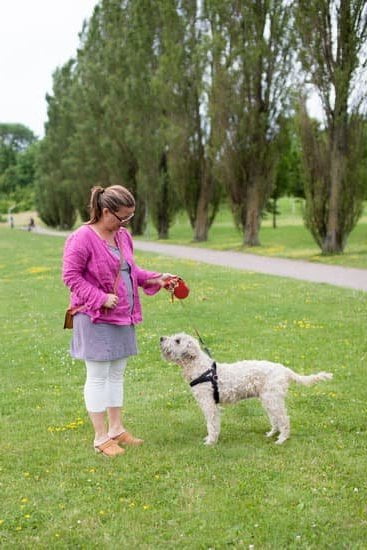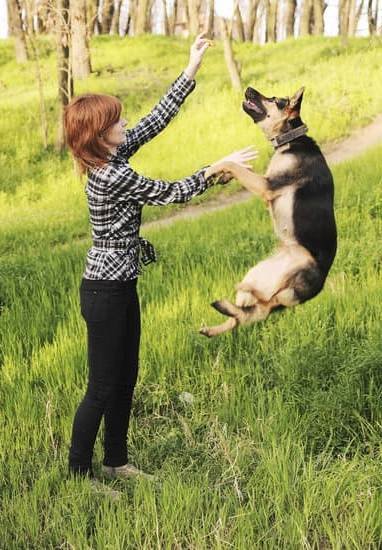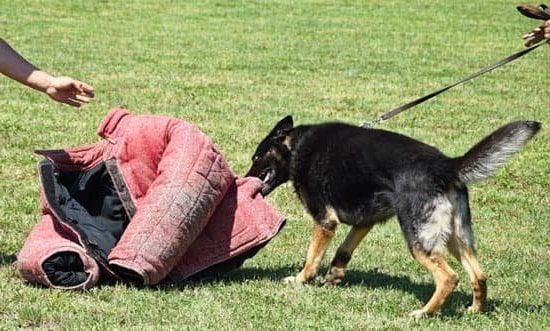Kennel training can be a valuable tool in providing security and comfort for older dogs. It is never too late to introduce your senior canine companion to the benefits of crate training. In this article, we will explore the steps on how to kennel train your older dog, ensuring a smooth and positive experience for both you and your beloved pet.
As our dogs age, they may require extra support and guidance in their daily routines. Kennel training provides a safe space for older dogs to relax, feel secure, and have a sense of belonging. By implementing proper kennel training techniques, you can help alleviate anxiety and promote positive behaviors in your senior dog.
Before embarking on kennel training with your older dog, it is essential to assess their comfort level with crates. Some senior dogs may have had previous negative experiences with confinement or may simply be unfamiliar with kennels. Taking the time to understand your dog’s individual needs and preferences will set the foundation for successful crate training.
Understanding the Benefits of Kennel Training for Senior Dogs
Older dogs can greatly benefit from kennel training, even if they have never been exposed to it before. The process of kennel training can provide a sense of security and comfort for senior dogs, especially as they may experience age-related anxiety or behavioral changes. By introducing your older dog to a kennel in a positive and gradual manner, you can help them feel safe and secure in their own space.
There are several key benefits of kennel training for senior dogs. Firstly, it can aid in house training or retraining older dogs who may be experiencing accidents indoors. A kennel serves as a den-like environment where your dog can feel relaxed and less likely to have accidents.
Additionally, kennel training can help reduce separation anxiety in older dogs, providing them with a safe space when you are away from home. This sense of security can alleviate stress and promote overall well-being for your senior canine companion.
When considering how to kennel train your older dog, it is essential to assess their comfort level with the idea of being confined in a crate. Some older dogs may have had negative experiences with confinement in the past, so it is crucial to introduce the kennel slowly and positively.
Start by placing treats or toys inside the crate to entice your dog to explore it on their own terms. Gradually increase the amount of time spent inside the crate while offering praise and rewards for calm behavior.
Assessing Your Older Dog’s Comfort Level With Kennels
As you embark on the journey to kennel train your older dog, it is important to first assess your furry companion’s comfort level with crates. Some senior dogs may have had negative experiences in the past with confinement or simply never been introduced to kennels before. Taking the time to evaluate your dog’s feelings towards crates can help make the training process smoother and more enjoyable for both you and your pet.
To determine your older dog’s comfort level with kennels, consider the following factors:
- Observe their body language: Watch how your dog reacts when they are near or inside a crate. Are they anxious, fearful, or defensive? Or do they show signs of curiosity, calmness, or even relaxation?
- Desensitization exercises: Introduce the crate gradually by leaving it open in a familiar and safe space for your dog to explore at their own pace. Place treats, toys, or familiar bedding inside to create a positive association.
- Previous experiences: Reflect on any past experiences your older dog might have had with crates. If there were negative incidents, take extra care in re-introducing them to ensure trust and comfort.
Once you have assessed your older dog’s comfort level with kennels and identified any potential concerns or fears, you can tailor your approach to kennel training accordingly. Remember that every dog is unique, so patience, consistency, and positive reinforcement are key in helping your senior canine companion feel safe and secure in their new crate environment.
Choosing the Right Size and Type of Kennel for Your Senior Dog
As your older dog transitions into kennel training, selecting the right size and type of kennel is crucial for their comfort and successful training experience. Here are some key considerations to keep in mind when choosing a kennel for your senior furry friend:
Size Matters
When it comes to selecting a kennel for your older dog, size matters. The kennel should be large enough for your dog to stand up, turn around, and lie down comfortably.
However, you also want to ensure that the space is not too big as this can defeat the purpose of creating a den-like environment for your pet. Measure your dog from the tip of their nose to the base of their tail and add a few inches to determine the appropriate size.
Type of Kennel
There are various types of kennels available on the market, including wire crates, plastic carriers, and soft-sided crates. Consider your dog’s preferences and needs when choosing a kennel type. Some older dogs may prefer the coziness of a plastic carrier with little visibility, while others may appreciate the airflow and visibility provided by wire crates. Soft-sided crates can be a comfortable option for dogs who are already accustomed to them.
Special Features
For older dogs with specific needs or mobility issues, consider special features such as easy access doors, waterproof materials, non-skid bottoms, and removable trays for easy cleaning. Additionally, if your senior dog has anxiety or noise sensitivity, you may want to opt for a covered crate to provide them with a sense of security and privacy during training sessions.
By carefully selecting the right size and type of kennel for your older dog’s needs and comfort level, you can set them up for success in their kennel training journey. Remember that patience and positive reinforcement are key elements in helping your senior canine companion adjust to their new training routine.
Step-by-Step Guide to Introducing Your Older Dog to the Kennel
Introducing an older dog to a kennel may require a bit more patience and understanding compared to training a younger pup. However, with the right approach, you can successfully acclimate your senior canine companion to their new space. Here is a step-by-step guide on how to introduce your older dog to the kennel:
Start Slow and Positive
It’s crucial to make the kennel a positive and inviting space for your older dog. Begin by placing some of their favorite toys or blankets inside the kennel to create a comfortable environment. Leave the door open initially so that your dog can explore the space at their own pace without feeling trapped or confined.
Use Treats and Positive Reinforcement
Encourage your older dog to approach the kennel by using treats and positive reinforcement. Gradually move the treats closer to the entrance of the kennel, rewarding any signs of interest or curiosity. This will help create a positive association with the kennel and make it a place that holds happy experiences.
Practice Short Sessions
Once your older dog starts showing interest in the kennel, you can begin practicing short sessions of having them enter and exit the space voluntarily. Use treats and praise to reward good behavior, gradually increasing the time spent inside the kennel. It’s essential to monitor your dog’s comfort level throughout these sessions and always end on a positive note.
By following these steps and being patient with your older dog, you can successfully introduce them to their new kennel in a stress-free manner. Remember that each dog is unique, so adjust your approach based on their individual needs and comfort levels during this training process on how to kennel train your older dog.
Establishing a Routine for Kennel Training With an Older Dog
To start establishing a routine, it is essential to create a schedule that includes regular feeding times, potty breaks, exercise, and rest periods. Introduce the kennel as part of this routine by placing it in a quiet and peaceful area of your home. Encourage your older dog to explore the crate on their own terms without forcing them inside. Use treats or toys to make the kennel inviting and rewarding for your senior canine companion.
Once your older dog shows signs of interest in the kennel, begin incorporating short periods of confinement during the day. Gradually increase the time spent inside the crate while you are at home before attempting longer durations or leaving them alone.
Consistency is key in reinforcing positive associations with the crate, so make sure to stick to the established routine even if setbacks occur. With patience and positive reinforcement, your older dog will learn that their kennel is a safe haven where they can relax and feel secure.
Remember that every older dog is different, so be observant of their individual needs and comfort levels throughout the training process. Stay attuned to any signs of anxiety or distress during kennel training sessions, and adjust your approach accordingly. By creating a consistent routine tailored to your senior dog’s unique personality and preferences, you can help them feel comfortable and content in their new safe space.
Troubleshooting Common Issues During Kennel Training With Older Dogs
When it comes to kennel training older dogs, there may be some common issues that pet owners encounter. One of the main challenges you might face is separation anxiety in your senior dog. This can manifest as excessive barking, whining, or attempts to escape the kennel.
To address this issue, it’s essential to make the kennel a positive and safe space for your older dog. You can start by placing familiar items such as their favorite blanket or toy inside the kennel to help them feel more comfortable.
Another common problem during kennel training with older dogs is resistance to entering the crate. If your senior dog seems hesitant or fearful of going into the kennel, you can try using treats or their meals to create a positive association. Start by tossing treats near the crate and gradually move them closer inside. You can also feed your dog their meals near the crate and then eventually inside it to help them view the kennel as a rewarding place.
Additionally, accidents inside the crate can be a concern when kennel training older dogs. If your senior dog eliminates in the crate, it’s important not to scold or punish them. Instead, focus on establishing a consistent potty schedule for your older dog and take them outside frequently to prevent accidents.
Make sure the crate is appropriately sized so that they have enough room to stand up, turn around, and lie down comfortably. With patience and positive reinforcement, you can help your older dog adjust to kennel training successfully.
| Common Issue | Troubleshooting Tips |
|---|---|
| Separation Anxiety | Make the kennel a positive space with familiar items; start with short periods of time in crate |
| Resistance to Entering Crate | Use treats or meals to create positive association; gradually increase time spent in crate |
| Accidents Inside Crate | Establish consistent potty schedule; ensure appropriately sized crate; avoid scolding for accidents |
Gradual Transitioning From Kennel Training to Independence for Older Dogs
As your older dog becomes more comfortable and accustomed to their kennel, the next step in the training process is to gradually transition them to independence. This step is crucial in ensuring that your senior dog feels secure and confident when left alone without the need for constant supervision. It is important to take this transition slowly and at a pace that is comfortable for your older dog to prevent any setbacks in their training progress.
To start the gradual transition from kennel training to independence, begin by leaving your older dog in their kennel for short periods of time while you are still at home. This will help them adjust to being alone in a safe and familiar space without feeling anxious or stressed. Gradually increase the amount of time your senior dog spends in their kennel while you are away, starting with just a few minutes and working up to longer durations.
Once your older dog is comfortable being left alone in their kennel for extended periods of time, you can begin allowing them free roam of a designated area in your home while you are away. Make sure this area is puppy-proofed and safe for your senior dog, with access to food, water, and bedding. Keep a close eye on your older dog during this transition period to ensure they are adjusting well to their newfound freedom and independence.
Remember that every dog is unique, so it is important to monitor your senior dog’s behavior closely during this transitioning period. If you notice any signs of distress or anxiety, take a step back in the training process and provide additional support and comfort as needed. With patience, consistency, and positive reinforcement, you can successfully transition your older dog from kennel training to independence with confidence and peace of mind.
Tips for Maintaining a Positive and Comfortable Experience for Your Older Dog During Kennel Training
In conclusion, kennel training an older dog may present some challenges, but with patience and consistency, it can be a beneficial experience for both you and your furry companion. By following the step-by-step guide provided in this article, understanding the benefits of kennel training for senior dogs, and choosing the right size and type of kennel for your older dog, you can create a safe and comfortable space for them.
One key aspect to keep in mind is assessing your older dog’s comfort level with kennels. It is essential to observe their behavior and make adjustments as needed to ensure they feel secure in their new environment. Additionally, establishing a routine for kennel training will help your older dog adjust more easily and feel more at ease.
Lastly, as you gradually transition from kennel training to independence for your older dog, remember to troubleshoot any common issues that may arise during the process. By maintaining a positive and comfortable experience throughout the training journey, you can build a strong bond with your older dog while providing them with a peaceful retreat they can call their own. Remember, patience is key when learning how to kennel train your older dog.
Frequently Asked Questions
At What Age Is It Too Late to Crate Train a Dog?
It’s never too late to crate train a dog, but the process may take longer with older dogs. The key is patience, consistency, and positive reinforcement. Older dogs can still learn new behaviors with proper training.
How Do You Train an Older Dog to Sleep in a Kennel?
Training an older dog to sleep in a kennel requires a gradual approach. Start by making the kennel a comfortable and inviting space for your dog. Use treats and praise to encourage your dog to enter the kennel voluntarily. Be patient and persistent throughout the training process.
Should I Crate My Senior Dog at Night?
Whether to crate your senior dog at night depends on various factors such as your dog’s temperament, health, and behavior. Some senior dogs find comfort and security in their crates, while others may be anxious or uncomfortable. Consult with your vet to determine the best sleeping arrangement for your senior dog based on individual needs and preferences.

Welcome to the blog! I am a professional dog trainer and have been working with dogs for many years. In this blog, I will be discussing various topics related to dog training, including tips, tricks, and advice. I hope you find this information helpful and informative. Thanks for reading!





